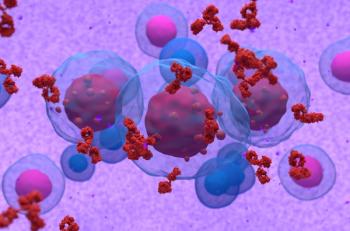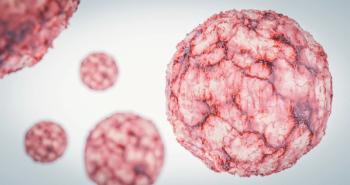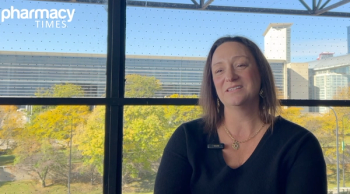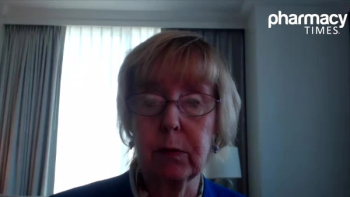
Signaling Pathway Found to Influence Resistance to Fulvestrant, Palbociclib in Patients with Breast Cancer
The EGFR/RAS/MEK pathway may serve as a predictive biomarker for palbociclib plus fulvestrant resistance and offer therapeutic targets to overcome resistance in patients with ER-positive/HER2-negative breast cancer.
The EGFR/RAS/MEK signaling pathway, which sustains cell proliferation and promotes an aggressive phenotype, has been found to influence acquired and intrinsic resistance to the combination therapy palbociclib plus fulvestrant in patients with estrogen receptor (ER)-positive /human epidermal growth factor receptor 2 (HER2)-negative metastatic breast cancer who were pretreated with endocrine therapy (ET), according to a clinical trial.
The study results were presented at the San Antonio Breast Cancer Symposium in San Antonio, TX.
In the PALOMA-3 trial, the combination of the cyclin-dependent kinase (CDK) 4/6 inhibitor plabociclib with fulvestrant led to a significant improvement in clinical outcomes, compared with fulvestrant plus placebo in patients with ER-positive/HER2-negative metastatic breast cancer who were pretreated with ET. Not all patients benefit from palbociclib plus fulvestrant, and virtually all ultimately progress. Therefore, alleviating the resistance mechanisms would help researchers to identify biomarkers to select patients who would benefit from the combination as well as developing new therapeutic targets for combating resistance.
Researchers tested ER-positive MCF7 BC cell lines that were resistant to long-term estrogen deprivation (EDR) or tamoxifen and the 600MPE de novo TamR cells for sensitivity to fulvestrant, palbociclib, and the combination of the 2 drugs. MCF7 EDR and MCF7 TamR cells were exposed to increasing concentrations of palbociclib plus fulvestrant to generate resistance derivatives. Through RNA sequencing and reverse-phase protein arrays, researchers found the transcriptomic and proteomic profiles of MCF7 EDR, EDR/FPR, and TamR/FPR.
Using palbociclib to treat MCF7 EDR and TamR cells resulted in a dose-dependent inhibition of cell growth and colony formation. In both MCF7 endocrine-R models, palbociclib or fulvestrant monotherapy significantly inhibited cell growth and reduced phosphorylated-Rb and the E2F target CDK2 protein levels compared with vehicle control.
The study authors highlighted that the EGFR inhibitor gefitinib, the pan-HER inhibitor neratinib, and the MEK1 inhibitor selumetinib selectively or more greatly inhibited the cell growth and reduced cyclin D1 protein levels in FPR cells compared with their sensitive counterparts.
IPA analysis of the proteomic profiles confirmed that MAPK signaling pathway were activated in FPR cells and identified EGFR as one of the top ranked upstream regulators. Increased EGFR mRNA and protein levels in FPR models were confirmed by RT-PCR and WB analysis.
Overall, the study’s findings suggest that acquired and intrinsic resistance to the palbociclib plus fulvestrant combination is associated with hyperactivation of the EGFR/RAS/MEK signaling pathway, which sustains cell proliferation and promotes an aggressive phenotype. The EGFR/RAS/MEK pathway may serve as a predictive biomarker for palbociclib plus fulvestrant resistance and offer therapeutic targets to overcome resistance in patients with ER-positive/HER2-negative breast cancer.
REFERENCE
Activation of the EGFR/RAS/p42,44 MAPK axis as a convergent mechanism of resistance to CDK4/6 inhibitors in ER+ breast cancer. Poster session presented at San Antonio Breast Cancer Symposium. Accessed December 3, 2019.
Newsletter
Stay informed on drug updates, treatment guidelines, and pharmacy practice trends—subscribe to Pharmacy Times for weekly clinical insights.

















































































































































































































